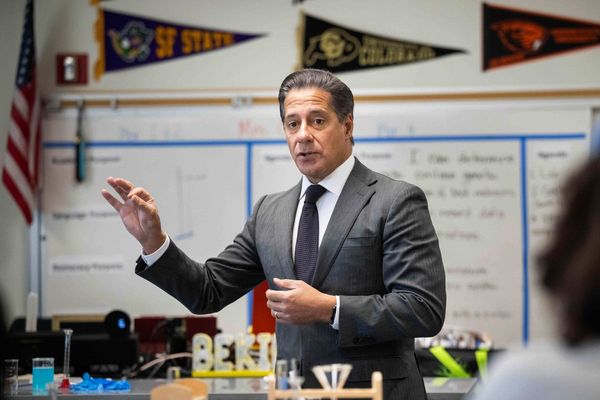
The suspect sought by Canadian authorities in a weekend stabbing spree that killed 10 people in and around an indigenous reserve was arrested on Wednesday, then lapsed into unexplained "medical distress" and died soon after at a hospital, police said.
Official word that the intense four-day manhunt for Myles Sanderson, 30, ended with his death came during a late-night news conference hours after the Royal Canadian Mounted Police (RCMP) reported he had been taken into custody.

Sanderson's demise clouded prospects of investigators ever clearly determining a motive for Sunday's deadly attacks, one of the bloodiest acts of mass violence in the country's history.
His older brother and accused accomplice, Damien Sanderson, 31, was found slain on Monday in a grassy area of the James Smith Cree Nation reserve in central Saskatchewan.
Police said they were still investigating whether the younger sibling might have killed his brother in the aftermath of the stabbing rampage, which took place in the reserve and the nearby village of Weldon, about 320 km (200 miles) north of the provincial capital of Regina.

Myles Sanderson was arrested near the town of Rosthern, roughly midway between Weldon and Saskatchewan's largest city, Saskatoon, after a resident of an adjacent town reported spotting him with a knife attempting to break in. He then sped off in a stolen pickup truck, according to the RCMP.
RCMP Assistant Commissioner Rhonda Blackmore told reporters police catching up with Sanderson forced his truck off the road into a ditch and surrounded the vehicle before taking the suspect into custody and seizing a knife from inside the pickup.
But Sanderson "went into medical distress" soon after he was detained, Blackmore said. He was attended to by emergency personnel on the scene and was taken by ambulance to a hospital where he was pronounced dead a short time later, she said.

Canada's Global News agency, citing multiple law enforcement sources, reported that Sanderson had died of unspecified injuries that authorities believed were self-inflicted.
Blackmore gave no details about the Sanderson's medical episode and declined to address questions about whether he might have ingested a drug or other substance that killed him, saying an autopsy would determine the manner and cause of his death.
She said investigators believe he had sustained an injury requiring medical attention either during Sunday's attacks or just afterward, based on his theft of a first-aid kit from another vehicle. Blackmore said an emergency-911 caller who reported spotting the suspect on Wednesday also described him as appearing to have an injury.

In addition to the 10 victims killed on Sunday, 18 others were wounded in the rampage, which unnerved a country where instances of mass murder are rare. Police said some of the victims appeared to have been targeted, while others were apparently random. (Graphic:
Authorities have offered no explanation for what may have sparked the attacks.
With Myles Sanderson's death, "We may never have an understanding of that motivation," Blackmore said.

His arrest came hours after new details about the victims and the circumstances of their deaths were brought to light by relatives.
During an emotional news conference on Wednesday, Saskatoon Tribal Council Chief Mark Arcand revealed his sister, Bonnie Burns, 48, and his 28-year-old nephew, Gregory Burns, were stabbed to death in their front yard on the James Smith Cree reserve early on Sunday morning.
Burns' other three sons and two foster children were also home at the time of the attacks.
"She was protecting her son. She was protecting these three little boys. This is why she's a hero. She's a true matriarch," Arcand said of his slain sister.
Thirteen-year-old Dayson Burns was stabbed in the neck but survived, and another young boy in the home hid behind a high chair watching the violence unfold, Arcand said.
"During this difficult time we are just climbing a mountain ... and that mountain is the devastation of what happened to our family member," Arcand told reporters.
Some First Nation leaders have linked the killings to drug use, but police have not cited drugs or alcohol as factors. A member of the James Smith Cree, Ivor Wayne Burns, said the Sanderson brothers belonged to First Nation communities.
Ten of the wounded were still hospitalized as of Tuesday afternoon, seven in stable condition and three critical, health authorities said.
Myles Sanderson had been wanted as a fugitive since May when he stopped meeting his parole officer after serving time for assault, robbery and other offenses. He had amassed a criminal record of 59 convictions over two decades, according to parole documents reviewed by Reuters.
Minister of Public Safety Marco Mendicino promised an inquiry into the decision to release Sanderson on parole.
Chief Bobby Cameron of the Federation of Sovereign Indigenous Nations, said in a statement on Wednesday night that the communities traumatized by Sunday's violence can at least "now take comfort that Mr. Sanderson is no longer a risk to their safety."
(Reporting by Anna Mehler-Paperny in Toronto and Steve Scherer in Vancouver; Additional reporting by Ismail Shakil in Ottawa, and Doina Chiacu, Kanishka Singh and Rami Ayyub in Washington; Writing by Steve Gorman; Editing by Deepa Babington, Lincoln Feast and Kim Coghill)







